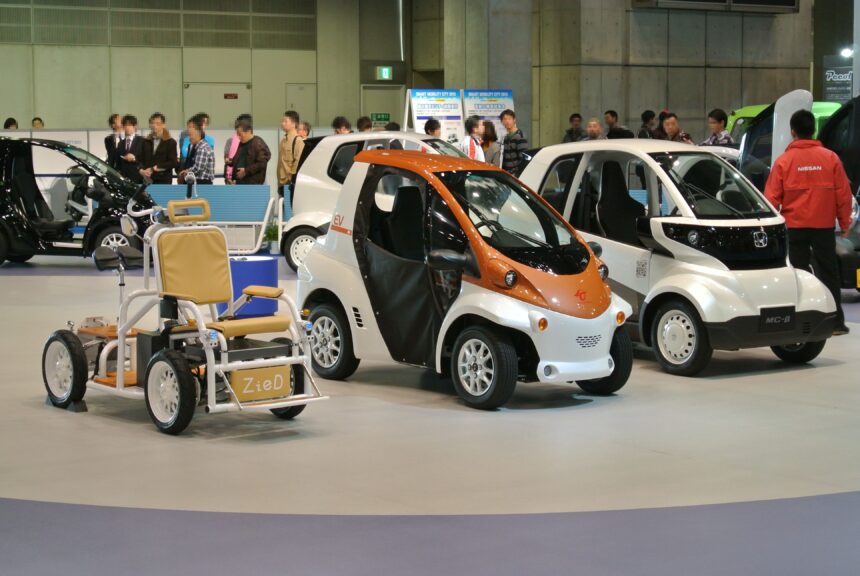As winter takes hold, Electric Vehicle (EV) owners find themselves navigating a series of challenges that significantly impact the efficiency of their vehicles. The term “Electric Vehicles” assumes critical importance in comprehending and effectively addressing these winter-related obstacles, with the potential for cold temperatures to decrease efficiency by approximately 30 to 40 percent, according to insights from John Komar, the executive director of the Automotive Centre for Excellence at Ontario Tech University in Oshawa.
The Complex Impact of Cold Weather on Electric Vehicle Efficiency

The arrival of winter brings forth a set of unique challenges for Electric Vehicle (EV) owners, marked by a reduced driving range and prolonged charging times. The keyword “Electric Vehicles” becomes a focal point in understanding and mitigating these winter-related issues. John Komar, a distinguished figure as the executive director of the Automotive Centre for Excellence at Ontario Tech University, sheds light on the potential efficiency decline of approximately 30 to 40 percent due to cold temperatures.
Navigating Efficiency Challenges in Electric Vehicles During Cold Weather
John Komar emphasizes the substantial impact of cold temperatures on the efficiency of Electric Vehicles. This influence leads to a noticeable reduction in the distance these vehicles can cover on a single charge, raising concerns for EV owners who depend on their vehicles for daily commuting or extended journeys. The need to address these efficiency challenges becomes imperative to ensure the continued viability of Electric Vehicles in diverse weather conditions.
Prolonged Charging Times: An Additional Winter Challenge for Electric Vehicles
Beyond the reduced driving range, winter weather introduces an additional hurdle by extending the time required for charging Electric Vehicles. John Komar highlights a significant contrast: the 2 1/2 hours typically needed to reach an 80 percent charge on a summer day may extend to 3 or 3 1/2 hours in winter conditions. This elongated charging duration further compounds the challenges faced by EV owners during colder months, necessitating strategic solutions for optimal usability.
Real-World Experiences: Insights from Electric Vehicle Enthusiasts
Despite these formidable challenges, individuals like Mike Siska from Thunder Bay, Ontario, provide encouraging insights. Siska, a dedicated Tesla driver, shares positive experiences by adapting his driving habits to maximize efficiency during extended winter trips. His proactive approach, charging every two hours, underscores the importance of adjusting driving paradigms to align with the unique demands imposed by cold weather.
Dr. Tim Callahan, a Windsor-based doctor driving an Electric Ford F-150 pickup truck, offers additional perspectives. While his daily short drives of 40 to 50 kilometers remain relatively unaffected by the cold, he notes a substantial drop in the usual range during longer journeys – from 500 kilometers to slightly less than 400 kilometers per charge. Dr. Callahan’s experience highlights the practical challenges faced by the owners during winter and underscores the need for tailored solutions.
Strategies for Winter Driving with Electric Vehicles

1. Temperature Management
To mitigate the impact of cold weather on Electric Vehicle mileage, Komar suggests avoiding heating the entire cabin. Instead, focus on the driver’s side and leverage features like heated seats and a heated steering wheel to reduce overall energy consumption.
2. Battery Health Considerations
Highlighting the vulnerability of older batteries to cold temperatures, Komar emphasizes the positive trajectory of advancements in battery technology. Newer batteries showcase improved efficiency, and as technology evolves, future batteries are expected to enhance the overall performance of Electric Vehicles.
3. Adaptation to New Industry Standards
The ongoing development of a new industry for light-duty Electric Vehicles signals positive changes. Komar predicts continuous improvements, making more efficient and adaptable to diverse driving conditions.
In conclusion, while winter indeed presents formidable challenges for Electric Vehicle owners, the collective application of proactive strategies, adaptive driving habits, and ongoing advancements in battery technology forms a promising narrative. As the Electric Vehicle industry continues to evolve, the future holds the prospect of enhanced performance and efficiency, even in the face of colder climates. Owners can navigate winter challenges successfully, ensuring Electric Vehicles remain a reliable and sustainable transportation option throughout the year.
Read More
Harmony Across Continents: Apple Music Classical Launches in China, Japan, and More





